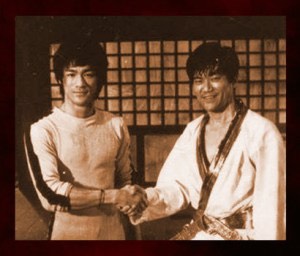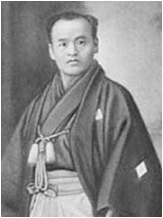It is an interesting thing to trace our Martial Arts family tree, and to see some of the people who have shaped our Art and been influential in the development of the Art we practice today. I started training in 1996 while I was at university. I trained under an Instructor named Mark Walker, who in turn was taught by Matthew Sung Su Kim, one of the early pioneers of Martial Arts in Australia, and with Ji Han Jae, the founder of Hapkdio.
Incidentally, Ji Han Jae has been involved in teaching a great many Martial Artists over the years, including the legendary Bruce Lee. Grandmaster Ji Han Jae credits three Instructors as being significant in his Martial Arts training.
One is a Buddhist nun known to him as ‘Grandma’ who taught him breathing techniques.
Another was a man called Taoist Lee who taught him Bo techniques and more breathing techniques.
His final Instructor was Yung Sul Choi, who taught him the base physical skills of the Martial Arts which we now know as Hapkido.
Ji Han Jae studies with Choi in Korea for a period of about 3 years before Ji Han Jae formed his own organisation. Yung Sul Choi was a Korean who was sold into slavery at an early age. It is unclear whether he was an orphan or whether is parents sold him, however he went to Japan as the slave of a Japanese family. He was not happy there and soon ran away and ended up begging on the streets in Japan. He was taken in by a Buddhist temple, however he didn’t really get on there either as he was always fighting with the other boys. The abbot of the temple spoke to his friend, Sokkaku Takeda who agreed to take the boy in.
Sokkaku Takeda was the leader of a famous samurai family. He was a prolific teacher and many of his students went on to found Martial Arts styles in their own right.
Some of his students included Moreihi Uesheba, the founder of Aikido and Jigaro Kano, the founder of Judo. Takeda took Yung Sul Choi in and he became a part of the Takeda household. There is a lot of debate about the role Choi played in the Takeda household. Choi himself claims to have been the adopted son and inheritor of all the Takeda family teachings. This seems very unlikely given the prevailing attitude of the Japanese to the Koreans. The Japanese consider themselves as a superior race, and it seems unlikely that a famous Samurai family would adopt an orphaned Korean boy and pass on all their teachings to him. Contemporaries and students of Choi state that Choi was only ever a house boy and a demonstration dummy, he was never actually taught by Takeda.
We will probably never know his exact position in the Takeda family, however when you look at the techniques which are in Choi’s Martial Arts and those techniques which appear in the Martial Arts of other of Takeda’s students, it is clear that Choi learnt from Takeda. After the end of the Second World War, Master Takeda died and Choi returned to a newly liberated Korea. He had some initial difficulties in finding his feet and engaged in a range of activities, working up to pig farming, eventually, To feed his pigs, Choi would queue for the free chaff that was given away at the brewery. As he would wait in line, fights would break out amongst the pig farmers for places in the line. With the teachings of Sokkaku Takeda, Choi was easily able to defend himself and keep the best place in line.
His abilities were noticed one day by the owner of the brewery, Bok Sub Suh, who was interested in the martial arts. Bok Sub Su asked Choi to teach him what he knew of the martial arts, and Choi agreed. So it was that the first Hapkido Dojo was started in a brewery.
At this time the art was known as Daito Ryu Aiki Ju Jitusu, which was the name given to the art by Sokkaku Takeda, and can be loosely translated as the self defence techniques of the House of Takeda. However this name was unpopular in Korea as it was too Japanese, and after the end of the Second World War anti Japanese sentiment was high in Korea. The name was therefor changed to Dai Dong Ryu Yu Sul, which means the same thing but in Korean. This name too was eventually discarded as it was too long and the art became known as Yu Sul.
In time it was decided that a name incorporating the ending 'Do' would be desirable. This means 'The Way' and many arts starting at this time were using this ending, such as Taekwondo, another Korean martial art. The name Hapkido was chosen, and can be translated to mean 'The Way of Coordinated Power'. This name gives us direction in developing our martial arts skills as we work to coordinate our mind and body to increase our power and


